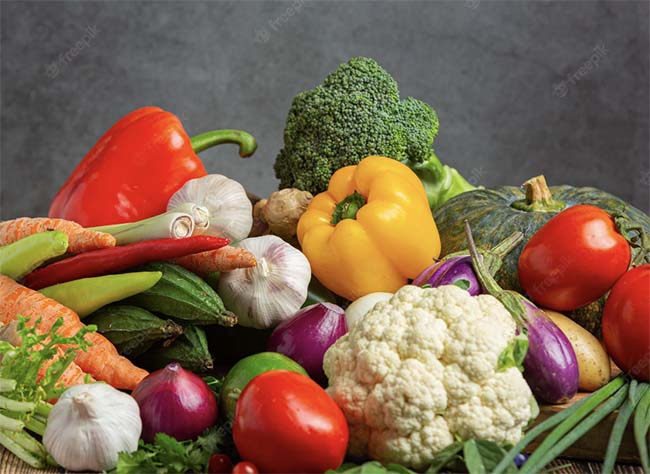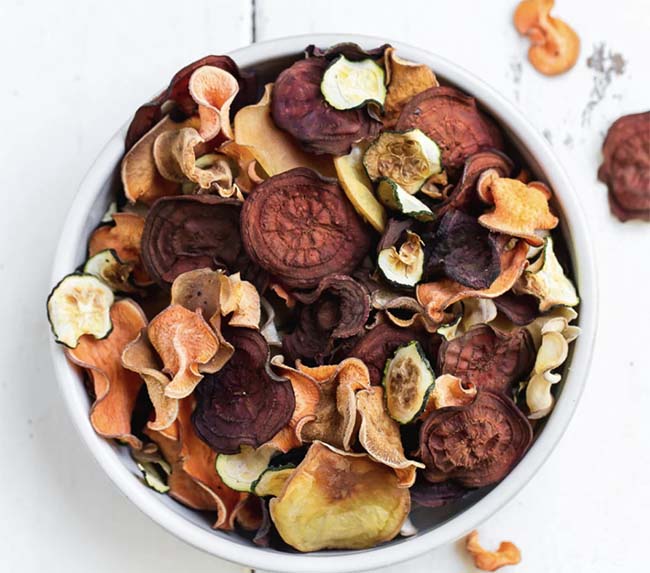There’s something almost magical about the perfect chip — think kale, sweet potato, or beet — that has been sliced thinly and then baked until it’s perfectly crisp and crunchy.
Unfortunately, keeping your chips this perfect is not always easy. These little guys can become soggy even in the best home kitchens and most seasoned chefs’ hands. Even though you may have just spent time paring away every last bit of excess moisture from your vegetables to prep them for this moment, there are a few things that can go wrong with anyone trying their hand at homemade vegetable chips.
But don’t let it get you down! A few tricks will help keep these little guys as crisp as possible, no matter your skill level or access to professional equipment.
Change up your cooking methods.
First, if you want to keep your chips as crispy as possible, you will want to change your cooking methods. While baking is a great option for veggies that don’t hold up well to frying or don’t need to be cooked all the way through, it can be a bit trickier when it comes to chips.
This is because baking these vegetables at a high temperature creates the perfect conditions for a crispy chip. However, these high temperatures will also rob these vegetables of a lot of their moisture, which is the enemy of crispness. You will consider using a different cooking method for your chips.
Use two different fats.
If you’re frying your chips in oil, you may want to consider using a combination of fats to help ensure that you are getting the crispiest outcome possible. While many recipes will call for vegetable oil, which can lead to a less crisp chip, others will call for peanut oil, a very stable oil with a high smoking temperature.
A combination of oils can help you get the best of both worlds. For example, combining peanut oil with another vegetable oil like canola or soybean can help keep your chips from burning while giving them a flavor and texture reminiscent of french fries.
Use a temperature guide.
When cooking anything, it’s always best to set a temperature guide — whether cooking a steak or baking a baguette. This will help you know when the food has finished cooking and what temperature you should be baking the chips at. You may not know that there is a recommended temperature for baking and frying most foods.
For example, the recommended baking temperature for chips and fries is 375˚F. There is little room for error when baking and frying at this temperature, so you are less likely to end up with soggy chips.
Don’t overcrowd the pan.
Ensure you aren’t overcrowding the pan when frying your vegetable chips. If the chips are too close together, the oil will cool off between each batch, robbing you of the perfectly crisp chip. For best results, you should be frying one or two handfuls of vegetables at a time.
If you fry too many vegetables at once, the oil will not be able to circulate properly and will end up cooling off too quickly. If you are frying in peanut oil, you should be careful not to overheat the oil. If the oil is too hot, it can break down the chips before they are fully cooked.
Keep your frying oil at the right temp.
It’s one thing to ensure that you aren’t overcrowding your pan and baking your chips at the correct temperature, but it’s also important to keep an eye on the temperature of your frying oil. If you are frying your chips in peanut oil, you will want to be careful not to overheat them.
If the oil gets too warm, it can break down the vegetable oil, leading to soggy chips. If you use a different frying oil, you will want to ensure that it is hot enough to cook them through. There are a few ways to test the temperature of your frying oil. The easiest way is to toss a small pinch of flour and see if it bubbles. You can also use a thermometer to get an exact reading.
Conclusion
Chips might be the snack made in heaven, but they’re also something everyone can make at home. When it comes to making chips, you can do a few things to ensure your chips are as crispy and delicious as possible.
First, you’ll want to change up your cooking methods to baking and frying. Next, ensure you use your pan effectively and keep your frying oil at the right temperature. Finally, ensure you’re using the right oil, so your chips come out perfectly every time. With these tips in mind, you should be able to make perfectly crispy and delicious chips at home any day of the week.


